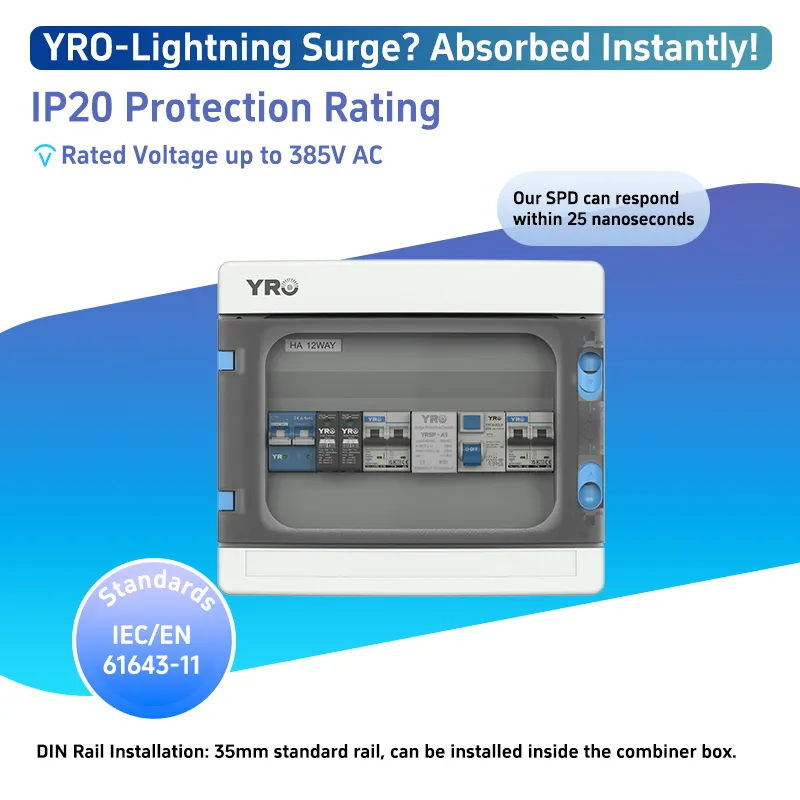Why Do Electronics Not Have Surge Protection Built Into Them?
Many people might wonder: If electronic devices came with built-in surge protection, wouldn't they be safer to use? After all, voltage fluctuations can damage devices like computers and TVs, so why don't manufacturers just build protection directly into the equipment?
This idea sounds reasonable, but in reality, there are many factors to consider. Integrating surge protection into every device involves design changes, increased costs, long-term maintenance, and the need to account for users' actual needs.
Space Constraints: The Conflict Between Miniaturization and Protection
Modern consumer electronics have become smaller, thinner and more portable. From smartphones to laptops, manufacturers are constantly striving to reduce product size while enhancing performance. This pursuit of miniaturization directly conflicts with the physical space required for effective surge protection components.
Effective surge protection requires specific components, such as metal oxide varistors (MOV), gas discharge tubes (GDT), or transient voltage suppression (TVS) diodes. These components need to be large enough to handle the energy they are designed to transfer from sensitive circuits. In many compact devices, there is simply not enough physical space to accommodate sufficient protective components, without affecting the shape or function of the product.

Why Aren't Computers Default-Equipped with Lightning Protection?
While smartphones struggle to include built-in lightning protection due to size limitations, why don't desktop computers come standard with it?
Although computers have basic voltage regulation, they generally do not include comprehensive lightning protection for the following reasons:
- First of all, computers are sold to the global market, and there are differences in power quality standards and surge risks in different regions. If all computers were equipped with high-level lightning protection devices to cope with the world's worst power supply environment, it would significantly increase product costs. For instance, computers made in Japan, if they are to be sold in areas with unstable power grids or frequent thunderstorms, will have to incur additional surge protection costs. Eventually, this expense will be passed on to all consumers. However, when developing electronic products specifically for these regions, the production costs will still increase, and eventually the expenses will still be passed on to the consumers.
- Secondly, lightning protection components themselves have a service life and will gradually age after each absorption of a surge. If the lightning protection device is built-in, when it fails, users cannot replace it conveniently, which will affect the stability of the entire machine's operation.
- Finally, effective lightning protection requires proper grounding conditions, correct installation methods, and consideration of factors such as grounding quality, grid stability, and installation standards. Built-in protection solutions cannot adapt to these external environmental variations, making it difficult to ensure consistent protection effectiveness.
Economic Reality: Cost-Benefit Calculations
Manufacturers operate in a highly competitive environment where cost directly impacts market viability.
Adding SPD to each device would significantly increase production expenses—not only due to the cost of the protection components themselves but also because of the additional circuitry, research, development, and testing required.
These additional costs will eventually be reflected in the product's selling price, leading to a decline in its competitiveness in price-sensitive markets. Given the actual probability of surge damage to consumer electronics, and the fact that many users have already equipped power strips or UPS dual power supplies with lightning protection functions, it is not economically reasonable enough to mandate that all products be equipped with built-in protectors.
Different Devices, Different Risks
Not all devices carry the same risk.
High-performance game consoles are much more sensitive to voltage surges than electric kettles. If all devices are forced to be uniformly equipped with the same level of protection, many people are actually paying for functions they don't need. The advantage of external lightning arrester lies in their ability to provide corresponding protection based on specific circumstances.

The Real Value of External Surge Suppressors
External surge suppressors are not optional accessories but the first line of defense for system safety. They can absorb or divert excess voltage during grid instability, lightning strikes, or power switching, while protecting multiple devices simultaneously. This is far more efficient than equipping each device with its own limited built-in protection.
In homes, office buildings, and even industrial settings, surge suppressors not only prevent equipment damage but also reduce repair costs, avoid downtime, and even mitigate fire risks. Their main advantages include:
- Resisting voltage impacts caused by lightning strikes and grid fluctuations
- Protecting multiple devices at once
- Reducing long-term maintenance and replacement costs
- Forming a tiered protection system when combined with circuit breakers and fuses
Why Relying on Built-In Protection Is Unreliable?
Some electronic products may have simple surge suppression functions, but that usually can only deal with small fluctuations. In the face of severe surges or lightning strikes, such protection is far from sufficient and the circuit board may burn out instantly.
The external lightning arrester has been strictly designed and certified to handle large-scale surge interference in real environments. So, relying on built-in protection itself is very risky, especially for high-value devices such as computers and mobile phones.
Conclusion
Although it may seem logical at first glance for electronics manufacturers to incorporate lightning arrester directly into their products, technical, economic and practical considerations make this approach mostly impractical for most consumer devices. Space constraints, cost pressures, performance degradation issues and regional power quality differences all contribute to this manufacturing reality.
Whether it is for protecting entertainment equipment or office equipment, external lightning arresters can provide more reliable protection and a longer service life in complex and changeable power environments.




